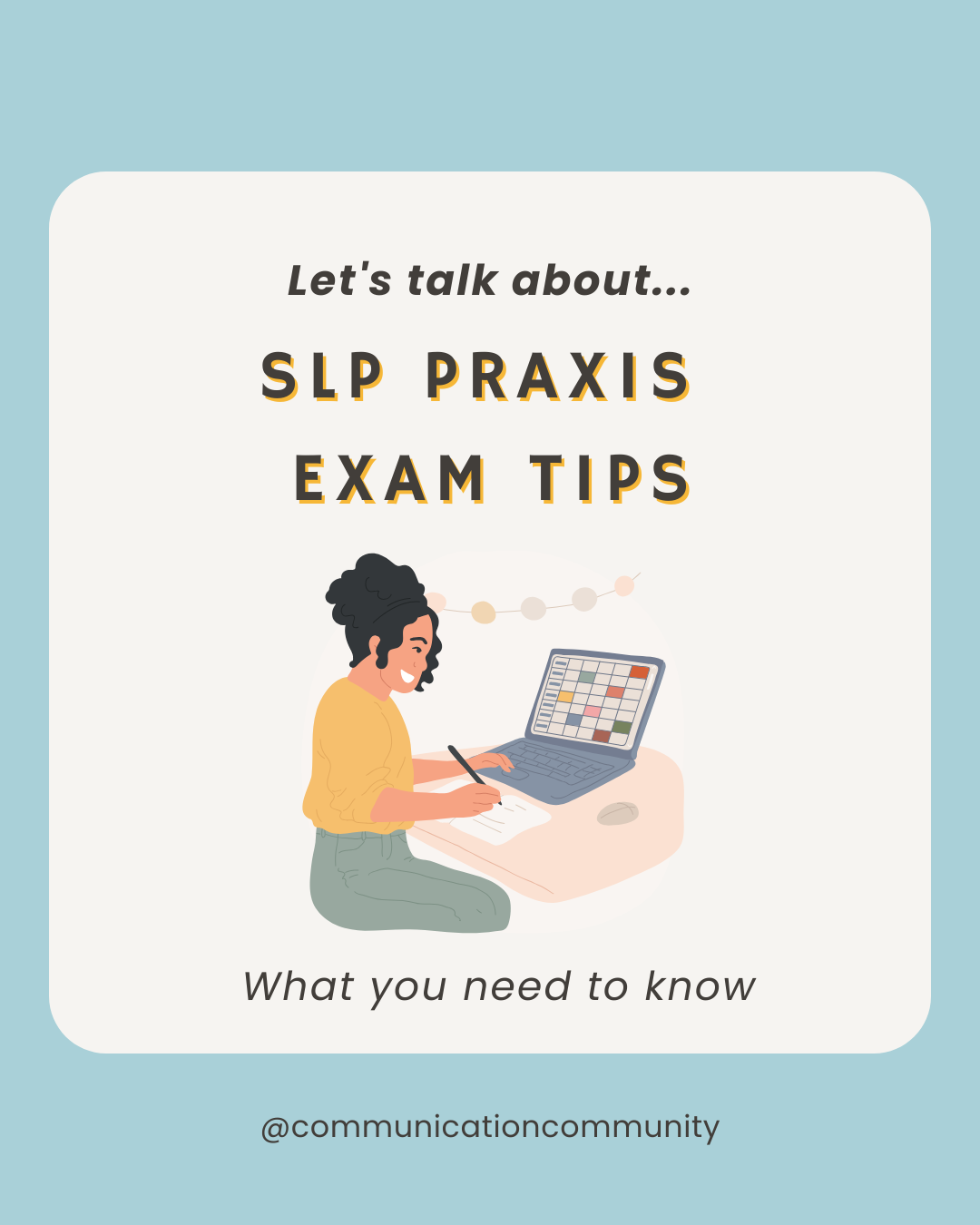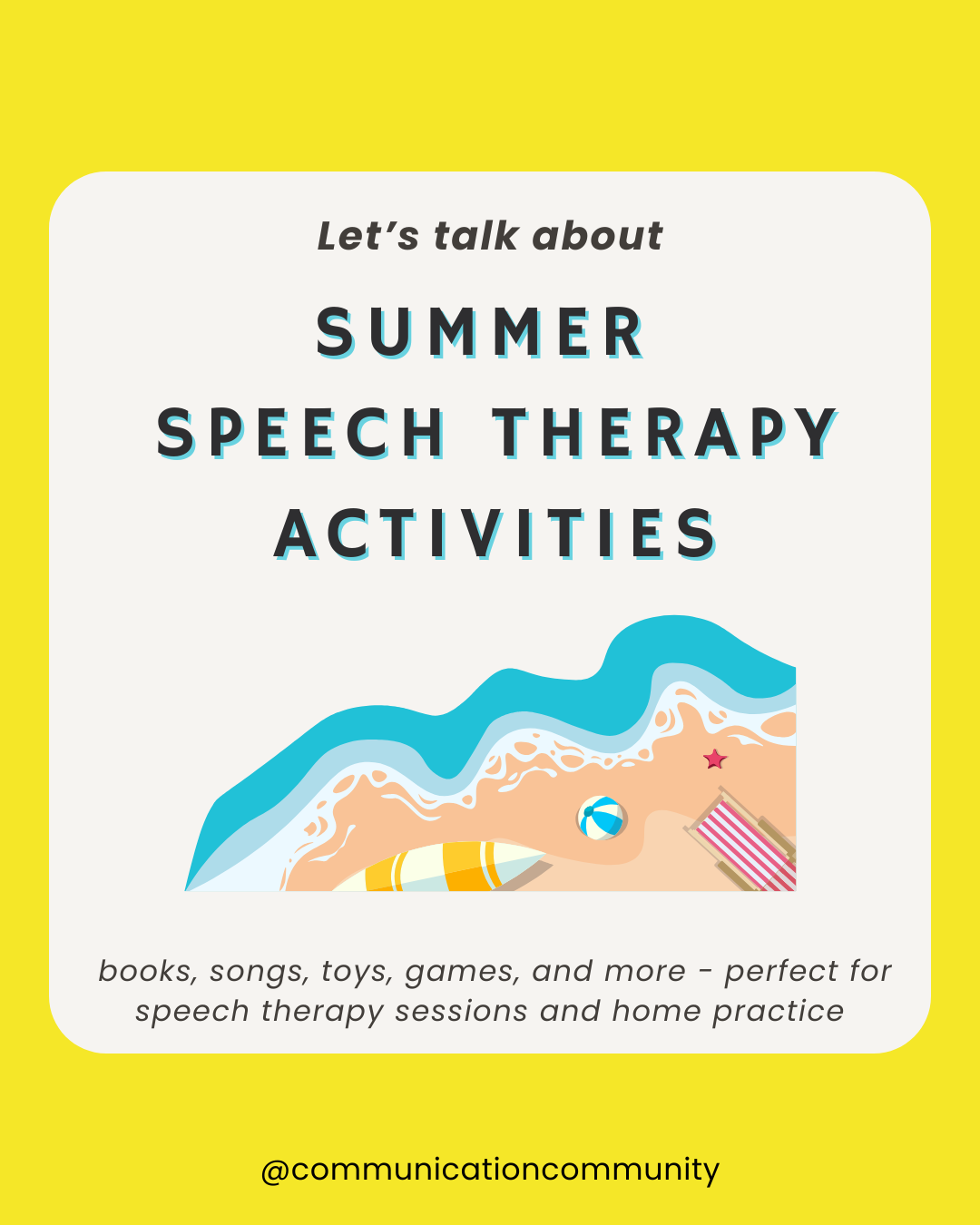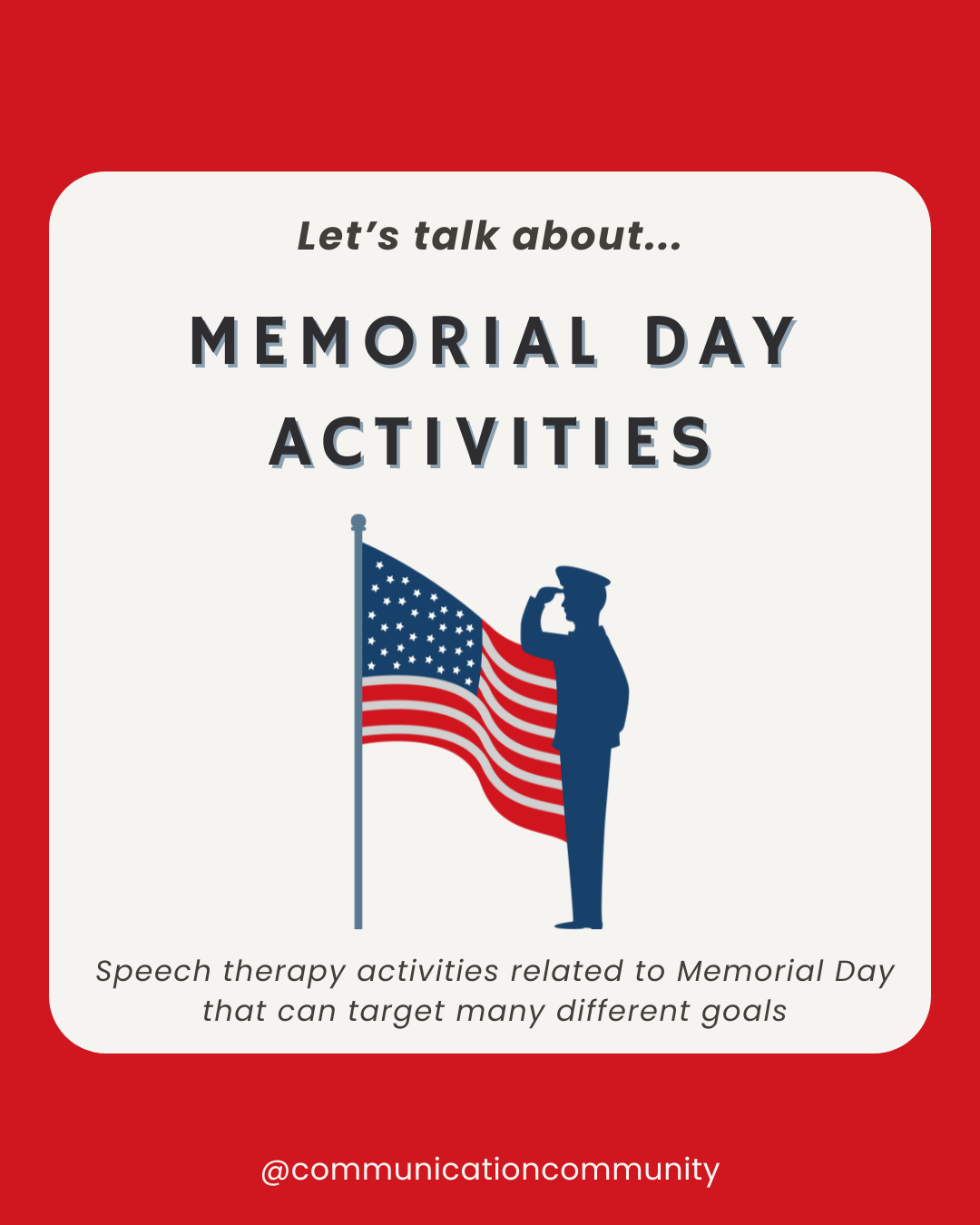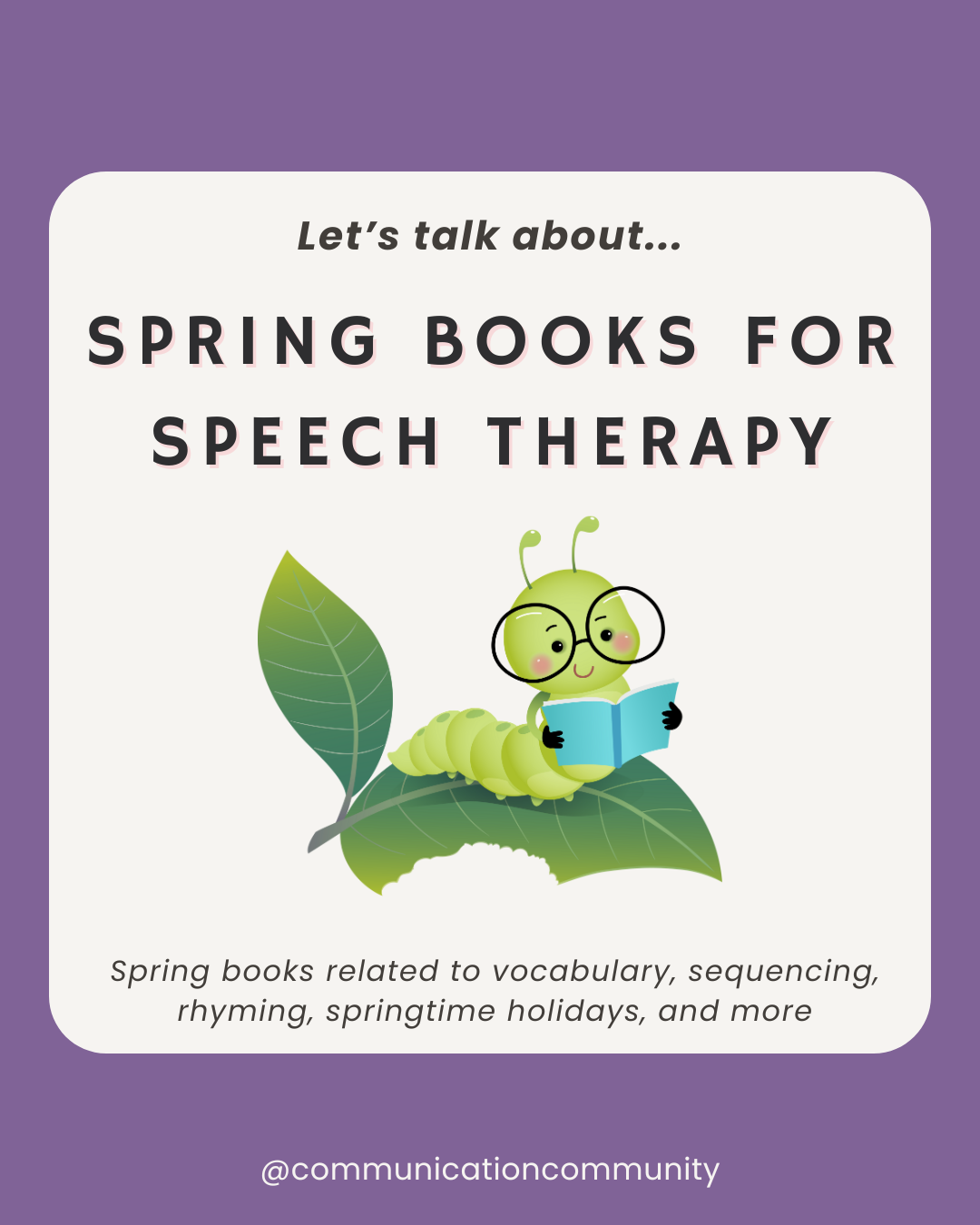How to Target WH Questions: Where do I Start?
If you are a speech-language pathologist (SLP) like us, you are probably familiar with targeting WH questions (who, what, when, when, and why) in therapy. WH questions are some of the most important linguistic areas to target because of their use and frequency in our day-to-day lives. The ability to ask and answer WH questions effectively allows us to be active participants in conversations and gain information. Many individuals with language disorders require explicit instruction to improve their ability to ask and answer WH questions. So where do we begin?
I begin with who, where, and what questions because they are usually easier for the individual to learn. When we are answering questions about people (who), places (where), and things/actions (what), we can often label and find concrete examples of what is being talked about. For example, “Who is this?” is usually easier to answer than, “Why are they happy?” When and why questions tend to elicit more abstract answers and may require inferencing, which is a more complex skill.
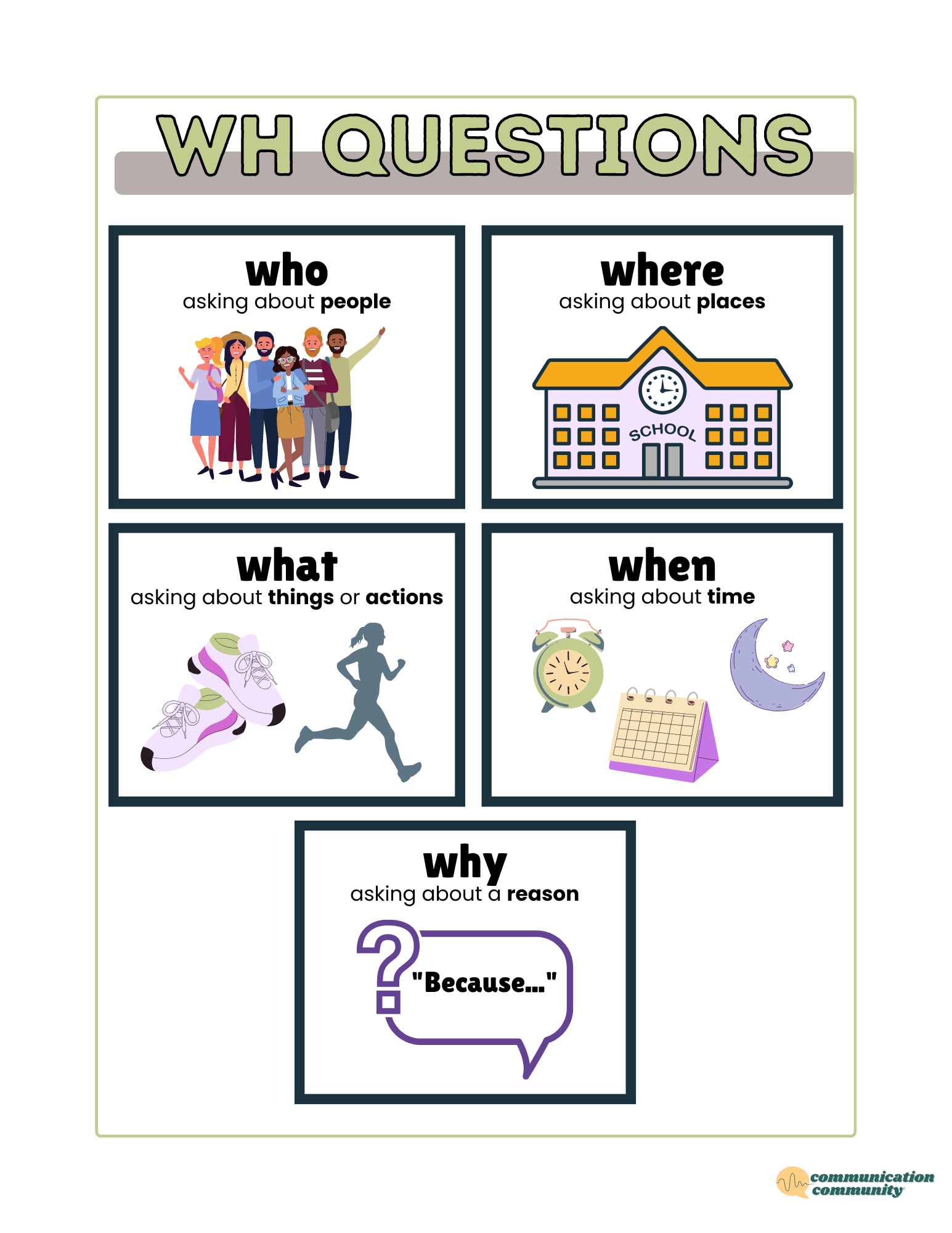
⭐ Want No Prep WH Question Resources?
Inside our Premium Community, we provide 100 pages+ of resources related specifically to WH questions. Get these a la carte resources in our TPT store OR get them, plus over $1000 worth of other resources, inside the Premium Community for one flat price.
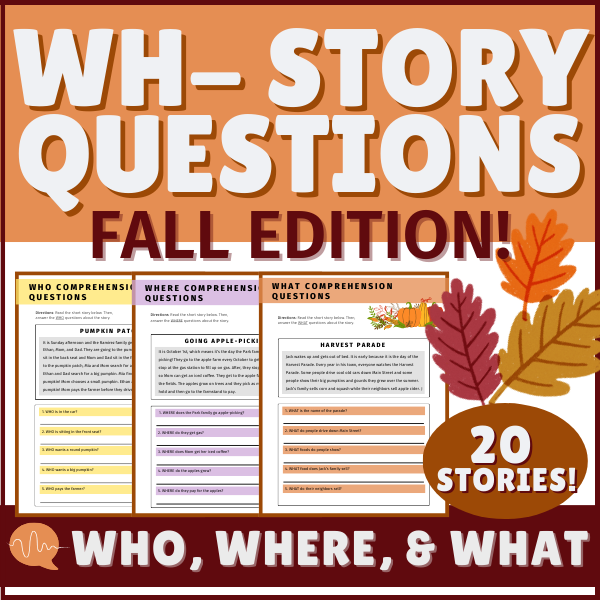
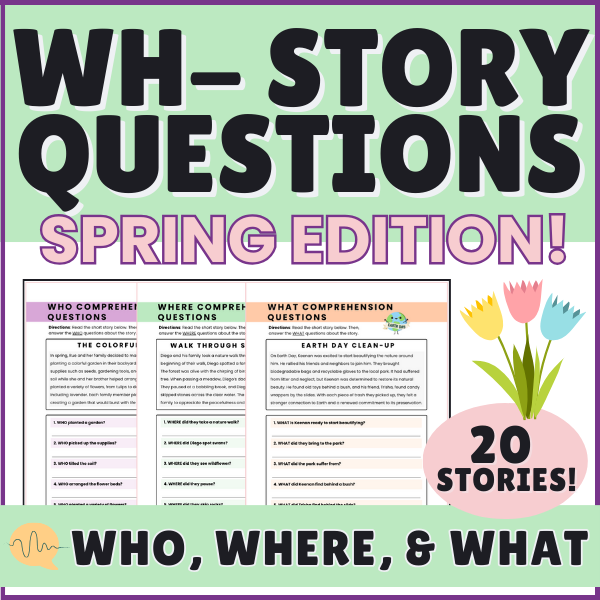
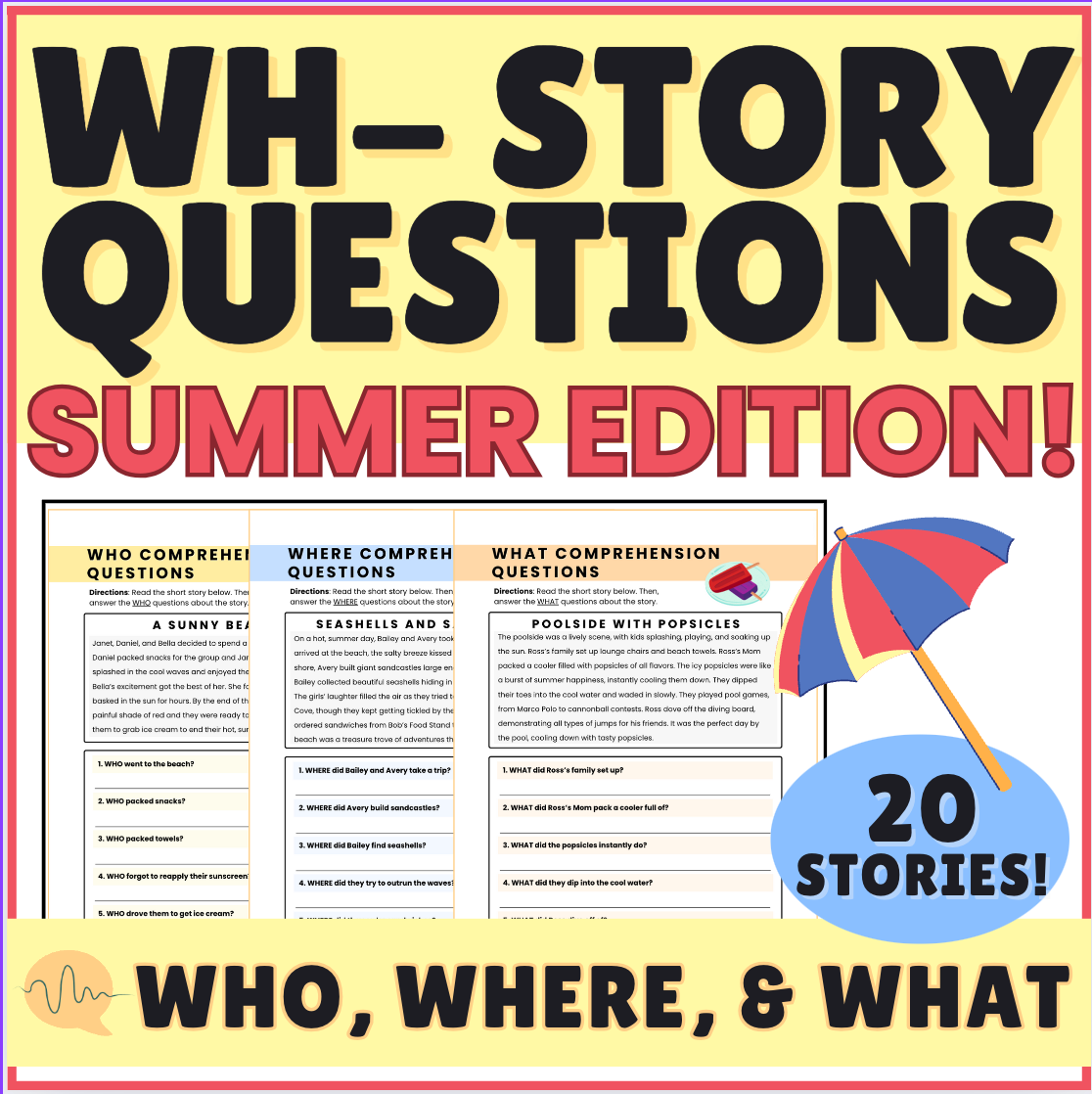
These resources, which are available in our TPT store, are also included in our Premium Community.

Targeting WH Questions: Considerations
1) Understanding WH questions (a receptive language skill)
The first thing to consider is: How well does the individual understand the WH word/question? The individual needs to have receptive knowledge of what the WH question means before they can properly use (express) it.
If the individual you are working with cannot identify the differences between different types of WH question words, they cannot be expected to use them when asking questions.
A receptive treatment goal example may look like: [Client] will identify (i.e., point to) the correct photo/symbol in response to a “who” question, during a structured drill activity, with 80% accuracy.
2) Using WH questions (an expressive language skill)
Once the individual has developed an understanding of the WH word/question, they will be better prepared to express or use the word themselves when engaging with others.
An expressive treatment goal example may look like: [Client] will respond to a variety of “who” questions, during a conversational task, with 80% accuracy.
3) Examining the communication profile of the client
Is the individual you are working with a reader or non-reader? This may change the type of materials and visuals you use to teach. If I am working with someone who is a pretty fluent reader, I try to limit visuals unless it is during the initial instruction of the concept.
Is the individual you are working with an AAC user? Consider using visuals for your instruction consistent with the visuals or symbols in their device or following the color key used in their AAC system (e.g., people/pronouns in yellow).
Is the individual you are working with a child, teen, or adult? If you are working with a young adult, it may be appropriate to incorporate questions relating to vocational concepts and/or activities of daily living (e.g., “Where do you go for your internship?”).
Does the individual you are working with already have a foundation/understanding of some WH questions already? Assess their current knowledge and work from there.
Targeting WH Questions: Approaches
Depending on the individual's current understanding/use and skill level of WH questions, your starting point may be different. Remember, it is key that your client understands the WH word/question before there is an expectation to use it/respond accordingly.
If I am starting from the ground up with WH instruction, this is usually the skill hierarchy I begin with:
Who, where, & what questions (for non or emerging readers)
1) Understanding the words who, where, and what in isolation.
This includes teaching the individual that who corresponds to people, where corresponds to a place/location, and what usually corresponds to a thing or action.
- Examples:
- “Show me who cooks food": The therapist shows the individual visuals with a person, place, and a thing related to food preparation
- Sorting activity: The therapist makes 3 columns and has the individual sort pictures of people, places, and things into separate columns
2) Understanding the words who, where, and what in basic questions with familiar items and people.
- Examples:
- “Where do you live? [show me]”: The therapist shows the individual a visual with a person (e.g., parent), a place (e.g., house), and a thing (e.g., bathtub)
3) Responding to basic WH questions (e.g., “Who/where/what is it?”) relating to their immediate vicinity or a picture.
Examples:
- The therapist points to a familiar teacher and asks, “Who is it?”
- The therapist shows the individual a picture of their school and asks, “Where do you learn?”
- The therapist holds up a familiar object (e.g., pencil)* and asks, "What is it?"
*Note: often, the question “What is it?” is introduced earlier on because it is asked when working on labeling vocabulary. It is common for an individual to associate this question with labeling something. They may not fully understand the function of the word “what” within a variety of questions (e.g., "What are they doing?" or "What do you eat with?").
4) Responding to personal basic WH questions (who, where, what) without visual supports.
- Examples:
- “Where do you go to school?”
- “Who is your teacher?”
- “What do you eat for lunch?”
When & why questions
1) When questions require an understanding of conditional concepts, like time.
Instruction of when questions can greatly vary depending on the individual. For someone younger, I may start with concepts like morning, afternoon, and night, and go from there. Similar to who, where, and what questions, I usually begin with some sort of receptive task before I move on to an expressive task.
- Examples:
- The therapist asks: “When do you eat breakfast [show me]?” and shows the individual a visual with pictures depicting the morning, afternoon, and nighttime.
2) Why questions (I find) can be the most abstract of them all!
However, they are really important for inferencing and building higher-level language skills. When I begin instruction, I try to give my client an understanding of the “expectation” of a why question. I explain that a why question is looking for a reason and we usually begin our response with “because _____.” I will usually focus on concrete why responses and go from there.
- Examples:
- The individual reads a short passage that clearly states why he was late for school.
- The therapist asks, “Why was the boy late for school?”
- The therapist provides 3 to 4 multiple choice options to choose from. For non-readers, you can show the client a picture scene that illustrates this scenario.
Though some therapy approaches have been provided, there is no “one-size-fits-all” to any therapy approach. Based on experience, this has been an effective guiding hierarchy of skills for my clients who are working on them.
Activities to Target WH Questions
- Reading books
- Using structured drills/trials
- Sorting activities
- Using picture scenes
- Playing games
- Asking/responding to conversational questions
- Responding to questions from a book or passage
- Matching questions with correct answers
- Talking about the day
- Using WH question picture cards
- Completing WH question workbooks
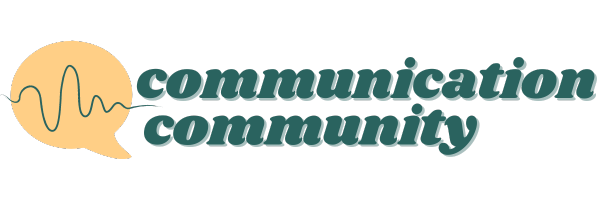
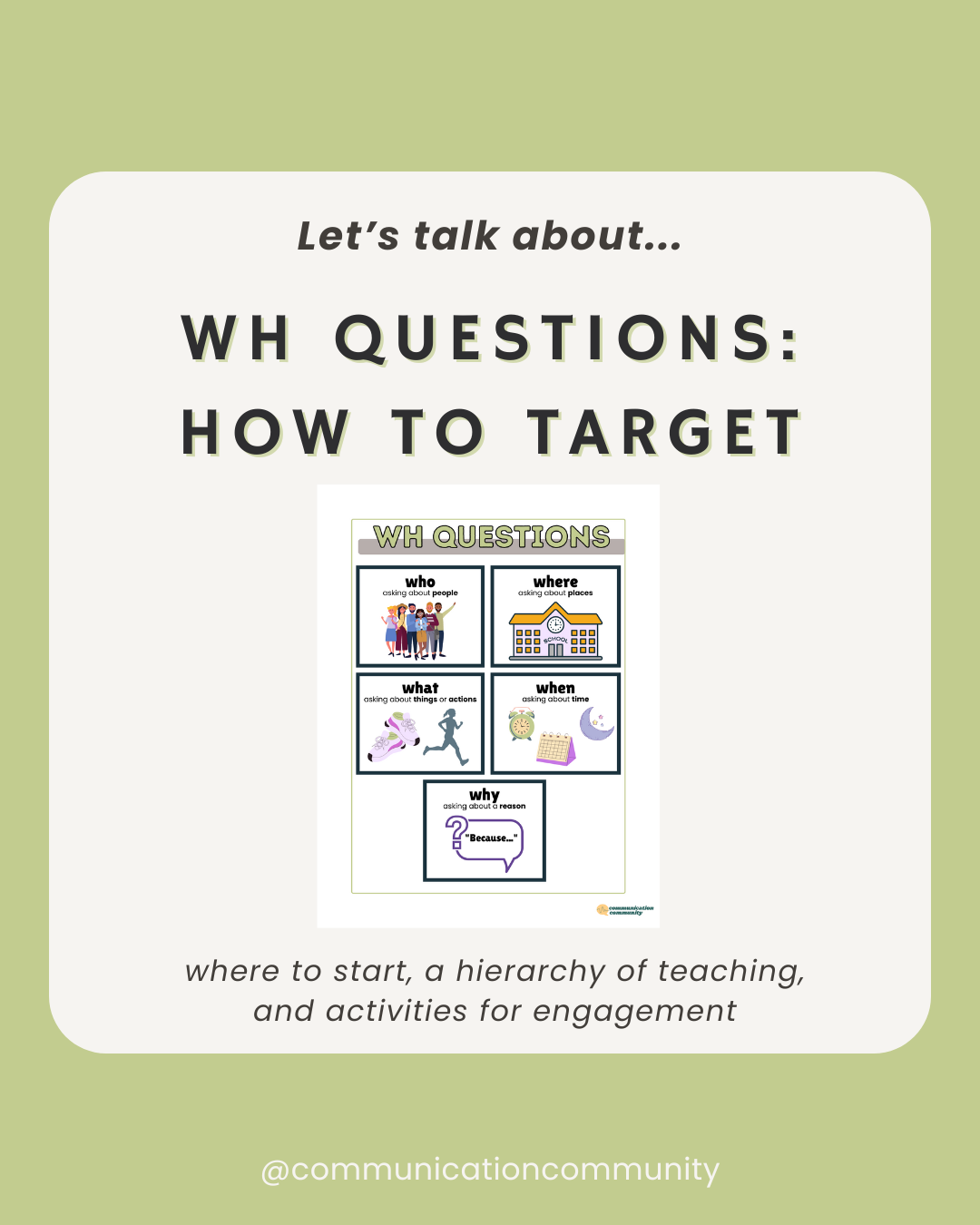
![How to Write Apraxia Goals [with goal bank]](https://www.communicationcommunity.com/content/images/2024/07/Apraxia-Goals--1-.png)
